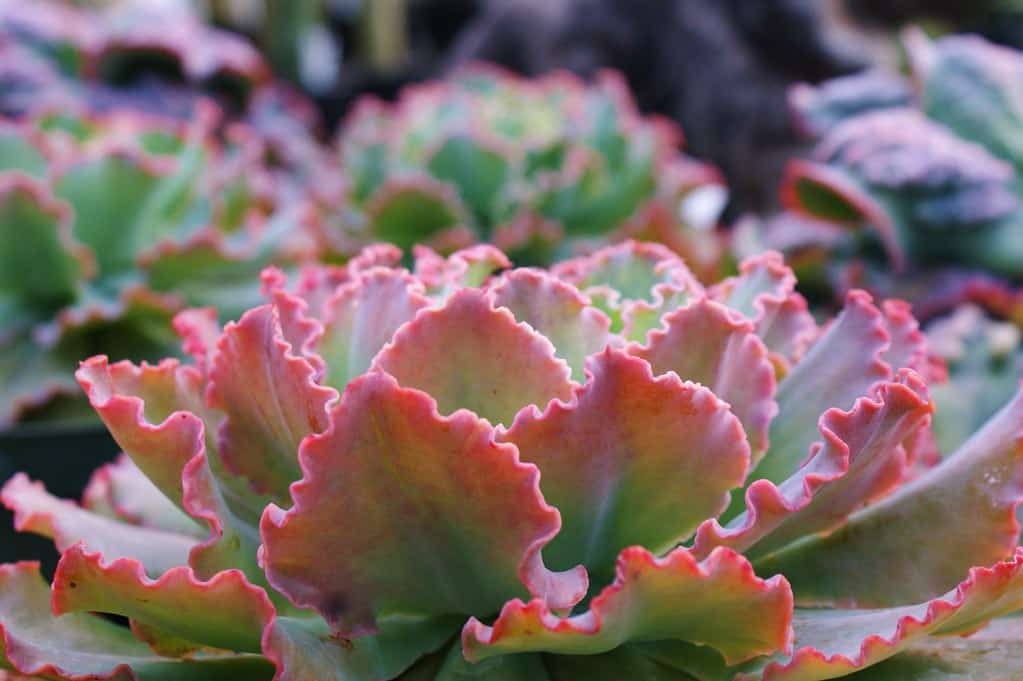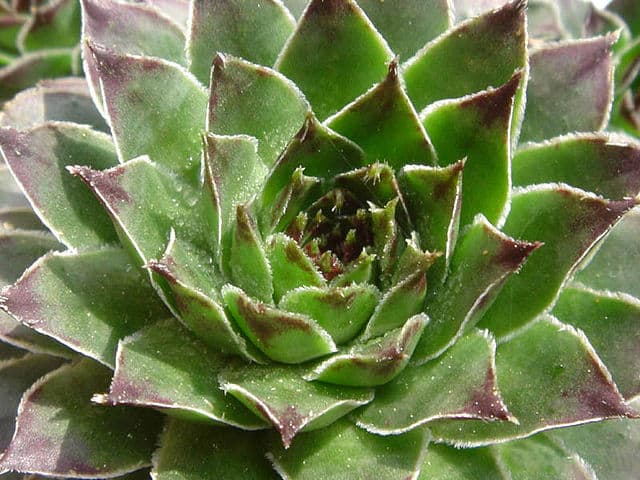The world of succulent plants is always full of wonders and colors. In particular, the abundance of succulent plants has always been a mystery to us. Have you ever been confused by seeing some succulent plants with cabbage? Because they have a very similar appearance with many unique colors.
This is interesting when someone thinks you are growing a cabbage plant in your home or office as an ornamental plant. If you are bored with common plants, try growing succulent plants that look like cabbage such as Echeveria ruffles, Aeonium smithii, and Sempervivum tectorum. In particular, succulent plants can tolerate drought and harsh conditions well. So you will save a lot of care time every day. Let’s learn more about cabbage-like plants in the article below.
The Succulent Plant That Looks Like Cabbage – Top 3 Popular Plants
In addition to some popular plants to grow in the home or office, many people love to look for some plants that have a unique appearance with special colors. Therefore, some cabbage-like succulents are becoming more and more popular and sought after by many people to propagate. The three most common cabbage-like succulents are Echeveria Ruffles, Aeonium Smithii, and Sempervivum Tectorum.
Echeveria Ruffles
Echeveria Ruffles is a succulent plant that most closely resembles cabbage today. It belongs to the Echeveria family with many unique variations and colors. This plant has blue or green leaves with pink margins. These leaves are arranged very alternately, evenly, and extremely beautifully like the leaves of cabbage.

Echeveria Ruffles will bloom in beautiful orange blooms in the summer when they mature. This plant can grow up to 12 inches tall and 12 inches wide under ideal living conditions. In particular, you can grow them outdoors or indoors because they will both grow and develop well. Like most succulents, Echeveria Ruffles is easy to grow, easy to care for, and requires little effort to maintain.
The preferred habitat of this plant is a warm, dry climate and direct sunlight every day. The growth rate of Echeveria Ruffles is very fast like cabbage, so many people may confuse them with each other.
Some notes when growing Echeveria Ruffles in the home or office
- Do not overwater or water continuously every day.
- Avoid wetting the leaves for long periods.
- Keep the soil moist and loose.
- Fertilize according to the growing season at the dosage recommended by the manufacturer.
- Maintain a warm temperature and good air circulation.
- Potted plants should not be placed outdoors on cold and frosty days.
Aeonium Smithii
Aeonium Smithii is a succulent plant native to the Canary Islands. It lives in Tenerife, on a volcano, at least 1,200 meters above sea level. Therefore, you will be attracted when looking at the unique beauty that nature bestows on them.
If you look closely, you will easily confuse Aeonium Smithii with cabbage. However, if you look closely at close range, you will notice that they have many differences. Aeonium Smithii has small hairs on its leaves as well as a unique color that will make it easy to distinguish from cabbage in the garden.

This plant, like most succulents, does not require complicated care techniques or special living conditions. You just need to make sure their habitat is dry, the soil is well-drained, the humidity is consistent, and avoid over-watering. Because their leaves always store a large amount of water, you don’t need to water them every day.
In addition, Aeonium Smithii can tolerate cold but if the temperature is below 10 degrees Celsius or frost, you should move them indoors or use a cover or straw to keep the plants warm.
Also, you don’t need to over-fertilize these plants as they can withstand extreme conditions like most succulents. Too much fertilizer will also cause them to burn leaves or overstress. Also, don’t forget that direct sunlight every day will help Aeonium Smithii grow well and resist root rot or fungal diseases.
Read more: Is Growing Cactus in Florida Possible?
Sempervivum Tectorum
Sempervivum Tectorum is a species of plant in the Crassulaceae family and is native to the mountains of southern Europe. They are grown throughout the countries of Europe for their unique and cabbage-like appearance. According to Roman legend, this plant can also protect buildings from lightning. Therefore, many people often grow them on the roof.

Today, however, they are often grown indoors or out in the garden for decorative and recreational purposes because of their unique beauty. You can easily find Sempervivum Tectorum than the above two succulent plants and the cost is cheaper. It’s great that every morning you can look at the mini garden with unique cabbages on the table.
This plant is very easy to grow and care for like other succulent plants. Because they live in areas with very little rainfall during the year, they prefer dry and low-humidity environments. Therefore, place the Sempervivum Tectorum in a location where it can be exposed to sunlight every day. You should only water 1-2 times a month or when the ground is 1-2 inches dry.
Over-watering will easily cause plants to rot due to long-term waterlogging. In addition, you should not mist succulent plants because they do not like high humidity and humid environments.
Summary
Some of the cabbage-like succulents that many people love to grow in the home or office are Echeveria Ruffles, Aeonium Smithii, and Sempervivum Tectorum. These plants have uniformly arranged leaves that resemble those of cabbage.
Like other succulents, these three plants all prefer dry environments, low humidity, well-ventilated air, and daily direct sunlight. You should not water too much because waterlogging will cause the root system to rot and harmful bacteria easily attack.
In addition, you should also regularly clean the leaves to avoid bacteria or insects hiding in the interstitial leaves and attacking plants. Certain species of beetles, aphids or caterpillars can attack plants. You can use neem oil to spray on the leaves to avoid insects or use insecticidal soap.